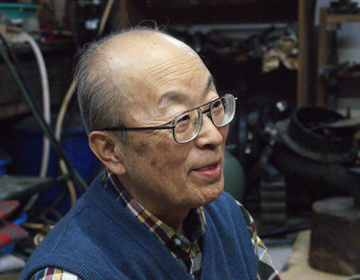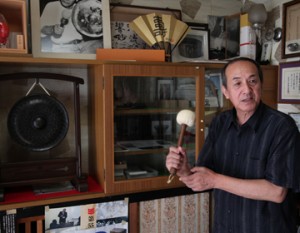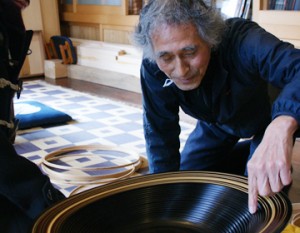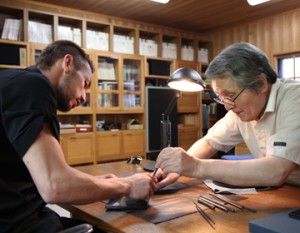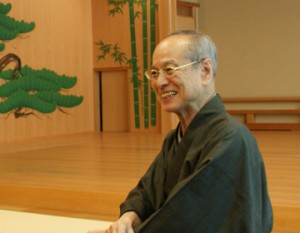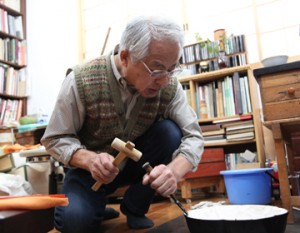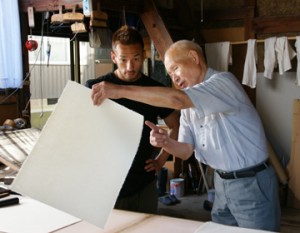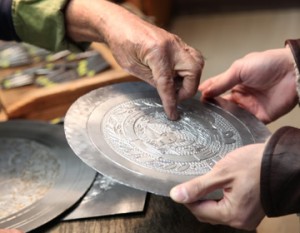Doing Things Others Do Not Want to
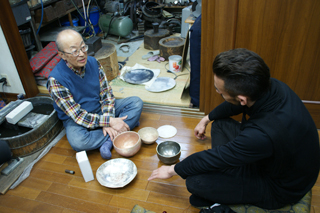
Toshichika Taguchi was designated Important Intangible Cultural Asset holder in the field of silversmith in 2006. The profession has run in the family from his grandfather’s generation and he is the 3rd generation. He is the first to create works for display in exhibitions. Until his father’s generation, they had mainly created items such as kettles and teapots used for tea ceremony, and utensils related to ”sake” such as ”sake” cups and bottles for ”sake”.
”I just wanted to indulge in what I wanted to do. Skill-wise, there is no difference to what my father and my grandfather was capable of, creating tableware for everyday use. It isn’t all that difficult. I wanted to do something others did not want to.”
That meant working with ”hard” material. Taguchi chose to work with hard materials, to express beauty in metal.
The Beauty of Metalwork
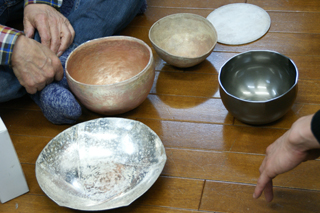
The beauty that can be expressed with metalwork is the ”hammer prints”. Taguchi also commented, ”Works that are created by a silversmith has different expressions, depending on how light is reflected. Therefore they are beautiful even without any designs.”
Taguchi uses material called ”Shibuichi (1/4)”. It is a metal alloy unique to Japan, with a 3 to 1 ratio of copper to silver. This is shrank and expanded to shape, using techniques called ”shibori” and ”nobashi”. First, the metal is hammered from the center. It takes time until for the shape to change.
Nakata gave it a try, but it seemed barely different even after hammering the entire sheet. That is how much patience and endurance is required. Tireless patience and endurance results in the ”hammered beauty” Taguchi mentioned. Taguchi referred to it as having no design, but the hammer prints are the silversmith’s ”design”.
Interesting to see Works ”Develop”
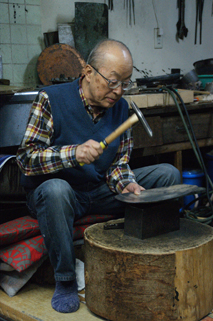
Once the metal begins to take shape, from here, it can be shaped into the desired form. Sometimes some parts are left thick, ”to show power”.
Nakata asked, ”Do you calculate the perfect balance before you start?” Taguchi replied, ”I have a blurry vision before I start. But I often change the style during the process. I think I tend to make much greater changes than most.”
”I enjoy how the pieces develop as I go.” He said that even when he tries to do something exactly the same, it always turns out different.
”I put a lot of thought into it because I want to create a good piece. I take time to think about different aspects, work carefully. But it hardly turns out the way I want it to. Then I go on to the next work. I try to repeat the process, learning from previous experience. But it always turns out different. The time it takes is different as well. That is how my works develop. I don’t know if there is a limit to its development. That makes it all the more enjoyable.”
The sophisticated technique gives birth to ”coincidence”. When an expression appears on the work that is beyond his own imagination, that is when another piece of work by Taguchi is born.



